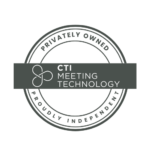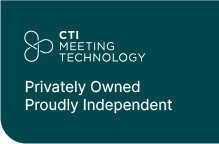With attendance numbers 23% higher than pre-pandemic times, event organizers are focused on maximizing conference attendance, hoping to enhance the attendee experience and bring those individuals back. Physicians and researchers get invited to multiple events every year; that’s why it’s so important for your meeting to stand out and offer them extra value.
Conferences are a great way to learn and network, so making the best of your attendees’ presence is crucial for personal growth and professional development. You might have already started implementing some measures like interactive tools or networking hubs – but in a fast-changing space like the events industry, organizers must adapt and innovate, employing new tools with every event.
Keep reading to discover key strategies to maximize conference attendance:
-
Choose a Convenient Location and Date
The overall success of your event starts in the planning stage. Your attendees are busy, so organizers should choose a date and format that accommodates as many of them as possible.
Don’t hold your conference on national holidays or dates close to those; most participants won’t be available. If your event is in-person, research the place and venue that will work for most attendees. But if possible, why not offer an option for remote attendees? With remote or hybrid meetings, users can connect to your conference from anywhere, a potential godsend for those with children or living far away from the conference venue.
While not the same experience as attending in person, there are several interaction and networking tools you can integrate to ensure remote attendees also make the most out of the event content and forge new connections.
Make sure that you can accommodate everyone in the venue chosen. No one likes to feel crammed in a room! Leave spaces for relaxing and networking between sessions as well. Furthermore, conference staff play a crucial role in maximizing conference attendance. They should provide ample networking opportunities and offer diverse session formats to cater to different learning styles. Scientific conferences often extend through a few days, so try to make it as comfortable as possible for all parties during their time there!
-
Craft an Attractive Program
While a posh venue and free food are good selling points, your attendees are there for the content. No one likes to feel like they’re wasting their time; this is why the event program is vital to attracting and retaining participants. During the event, attendees can use conference apps and software to create personalized agendas, allowing flexibility to enrich their experience.
Plan engaging sessions related to the conference topic and try to bring well-known speakers. The sessions shouldn’t feel like boring university lectures – but rather as a space to learn and share thoughts, so try to implement polling or other interactivity tools to keep the audience engaged. And lastly, try not to overlap popular sessions!
However, we know it’s not always in your hands to define the time slots, and you may have trouble managing the venue’s resources. In that case, on-demand content could be a good option for those who cannot attend all the sessions they want.
-
Leverage Social Media & Email Marketing
We’ve already covered some strategies to enhance the impact of your events with social media. Nowadays, everyone has a smartphone with an internet connection to access information anytime. Ensuring your event’s promotional efforts reach your target audience is crucial to attract attendees.
Research your audience’s social platforms of choice – for scientific conferences, LinkedIn and Twitter are the default options – and post regularly, including highlights and deadlines.
Moreover, organizers usually have a list of past attendees. Leverage this information to send personalized email campaigns and personally invite them to your next event. Use an attention-grabbing subject so you don’t get lost in their inbox, and be honest about what your conference is offering. And last but not least, don’t forget about GDPR! Only contact those individuals who have allowed you to send them communications.
-
Leverage Event Technology
Technology plays a pivotal role in modern conferences. There are almost as many software providers as fish in the water, so let’s dive into the main features organizers should look for in a provider:
- User-friendly interface: Don’t waste your participants’ time by making them learn a new and complicated system (spoiler alert, they won’t do it); this will cause frustration and potentially bring problems to your customer support team.
- Networking options: Make networking easier and accessible even for remote attendees.
- Customization options: Add your organization’s corporate colors, banners, and fonts to make your event stand out with appropriate branding.
- Integrations: Be sure your software provider supports integration with other systems and apps you might need during the conference.
Take your time to research before you decide on an event software provider. The best option is to choose an end-to-end system to handle all components of your event. Explore CTI’s all-in-one solution for meetings in any format.
-
Follow-Up
Don’t forget to send out a thank you email after your event. It’s a small gesture but something your attendees will appreciate. Plus, organizers can take this as an opportunity to ask for feedback. Some things might not have played out perfectly during the meeting, but the key is to be proactive and listen to your attendees. Collect their comments and let them know you are considering their feedback for future meetings. Following up might be one of the most crucial steps of the event lifecycle. Staying in touch with your participants and building relationships is vital to spreading your organization’s mission and ensuring their attendance in the future. Optionally, you can also send a small gift as a token of appreciation to speakers and other participants. After all, they’re ambassadors of your event; they’ll bring in more attendees in the future.
Wrapping Up…
Maximizing conference attendance involves efficient planning, effective networking, and leveraging technology. You want to use your events to build personal relationships with your attendees and offer them valuable experiences so they will return in the future. We hope you gained a better understanding of how to offer value to your attendees with our article. The best part is that organizers do not have to do this alone! Event technology can be a great help to maximize the attendee experience. You are ready to implement the strategies discussed and make your next conference successful!





